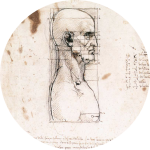 Cervical Myelopathy
Cervical Myelopathy
PATHOPHYSIOLOGICAL PRINCIPLES OF THE PATHOLOGICAL PROCESS
**1 Mechanical compression.
A reduction in the dimensions of the cervical canal, especially in the sagittal plane, is found in all cases. It is the main cause of cervical myelopathy. It is mainly related to the development of the anterior osteophytes and/or hypertrophy of the ligamentum flavum, on which the degenerative hypertrophy of the articular processes (facets), the posterior longitudinal ligament and the laminae can be superimposed (76).
Delayed myelopathy due chronic cord compression has been demonstrated in the dog (32) and in rats (42). A decreased neuronal density of 20% is observed as from the 9th week and more than 35% beyond the 25th week, whereas no significant lesion is observed before the 3rd week. Below the site of the compression there is axonal loss. The phenomena of cavitations of the gray matter appear as soon as there is a significant neuronal loss whereas the white matter is left unaffected for long.
**2 Micro-traumas
Each hour the cephalic end (head) makes hundreds of movements involving rotation and flexion- extension in varying proportions. It has been shown that with maximum flexion of the neck, the posterior wall of the spinal canal lengthens by 5cm and the anterior wall by 1.5 cm therefore stretching the dura and the cord. During movements of flexion-extension there is a decrease in the dimensions of the spinal canal aggravated during extension by the bulging of the yellow ligament. During each movement micro-traumas occur when compressive elements come in contact. The evolution of the myelopathy correlates with the number of these movements: these movements can be limited cervical immobilization.
Degenerative lesions of the disco-ligamentous apparatus leads to chronic instability responsible for a sub-luxation seen on dynamic images, additionally imposing more shearing movements on the cord (24).
**3. Vascular phenomena
Venous stasis stemming from canal stenosis appears to have an important pathophysiologic role in cervical myelopathy by causing chronic ischemia and cord edema.
A couple of years ago, through the initiative of Aboulker (1), it was proposed to systematically investigate for a superior azygos system pathology in which drains the cervical epidural veins. It is by this mechanism that neurological signs of dural arteriovenous fistulas are explained.
The role of arteries seems more modest due to the richness of the anastomotic system at the cervical level, but it is not an impossibility to consider a compression of radiculomedullary arteries of the cord, the anterior spinal arteries or even the vertebral arteries, by keeping in mind that the age for osteoarthritis is corresponds to that of atherosclerotic plaque (92). The anatomical lesions discerned during the autopsies of patients with cervical myelopathy suggest an ischemic mechanism (62).
 Encyclopædia Neurochirurgica
Encyclopædia Neurochirurgica

